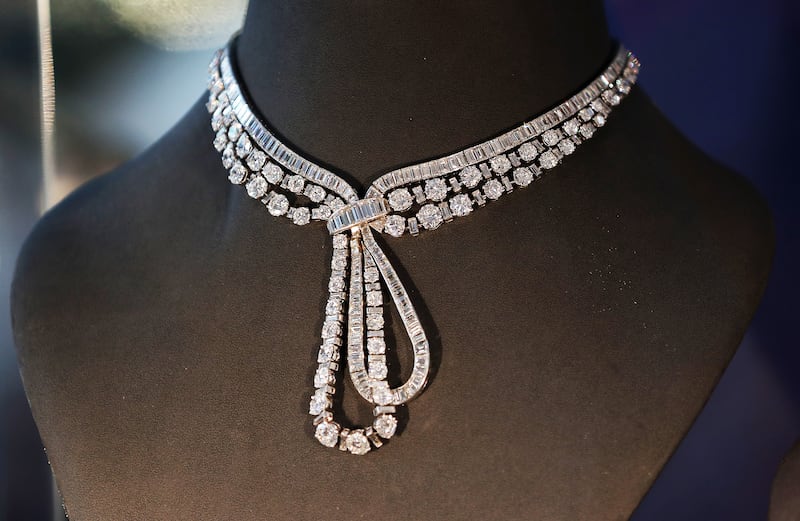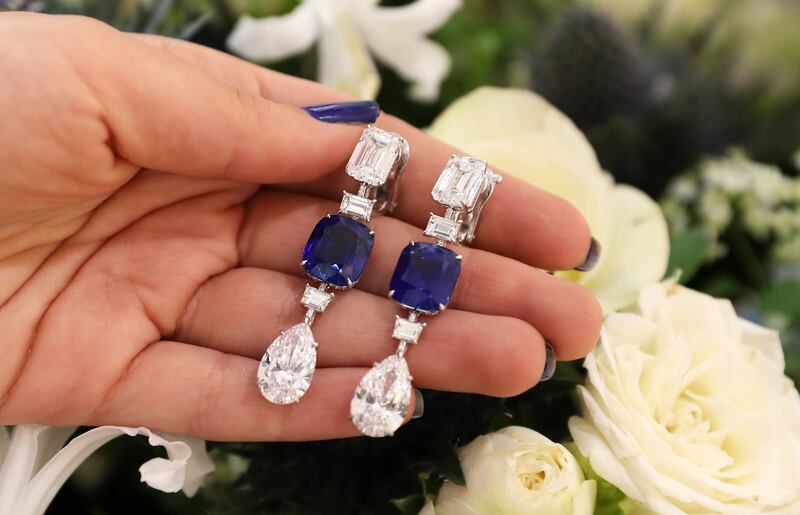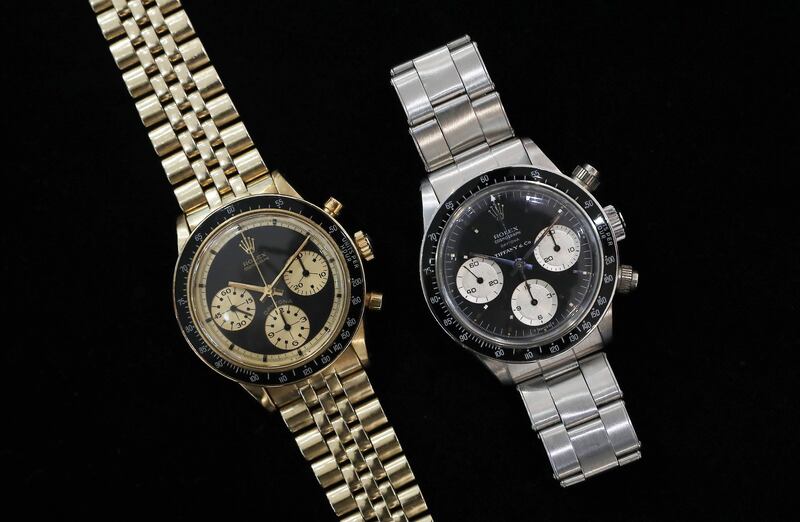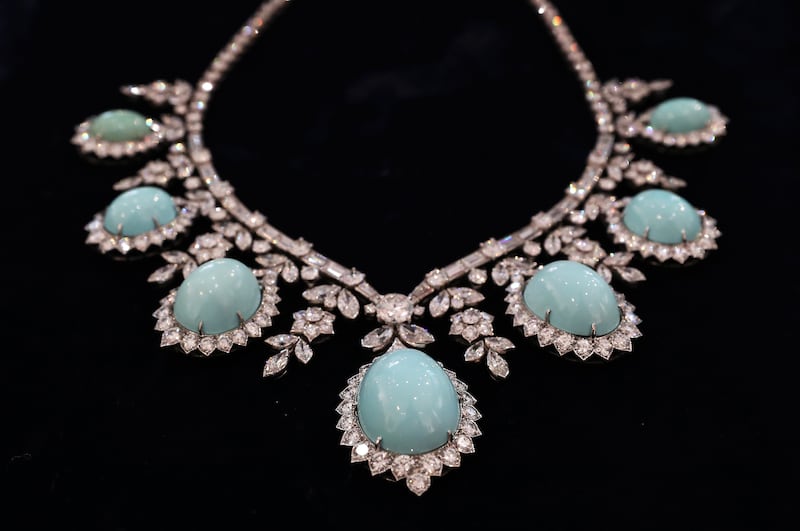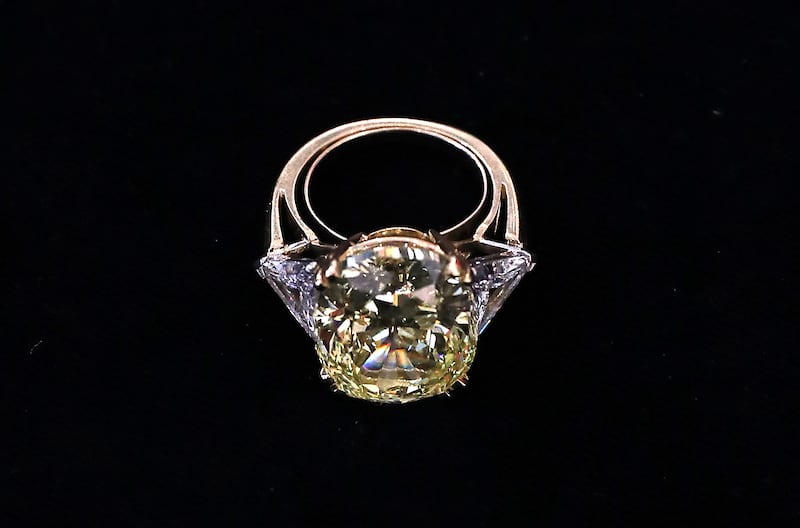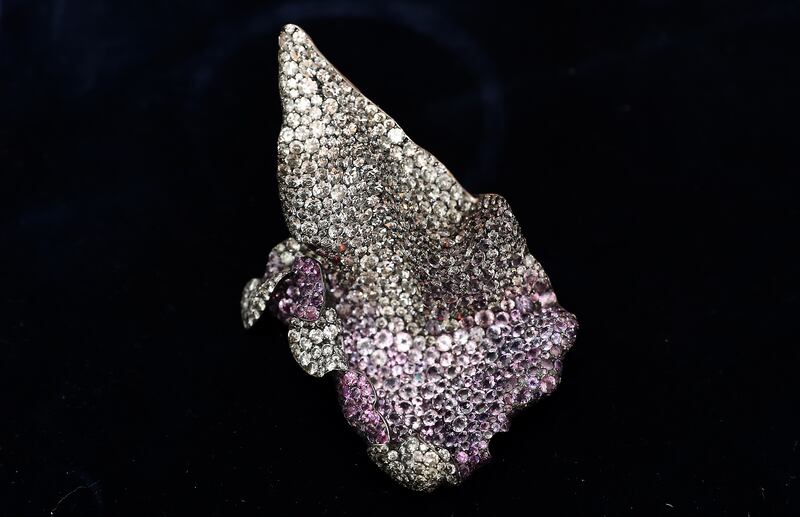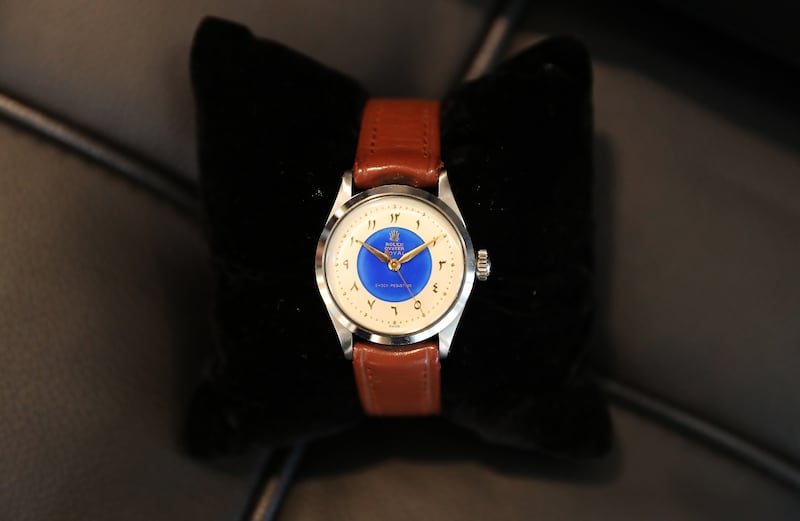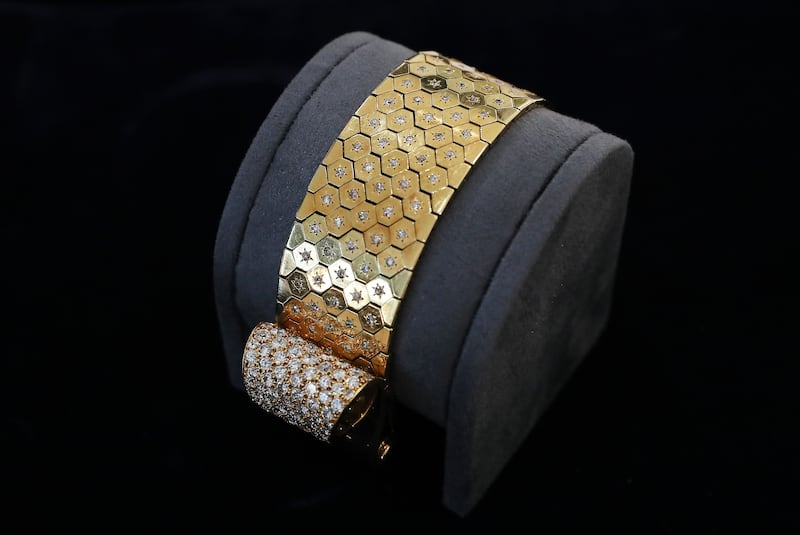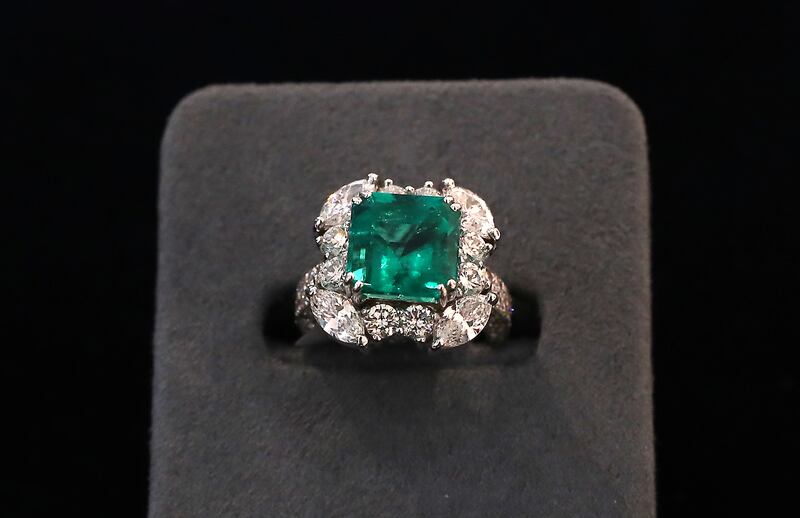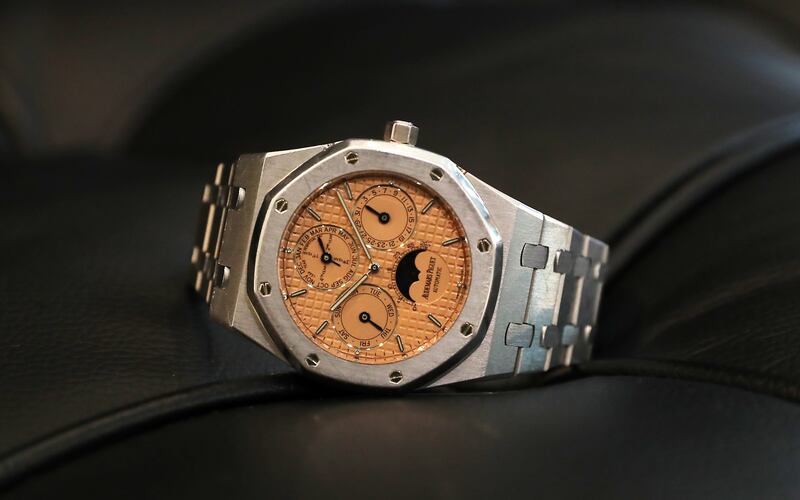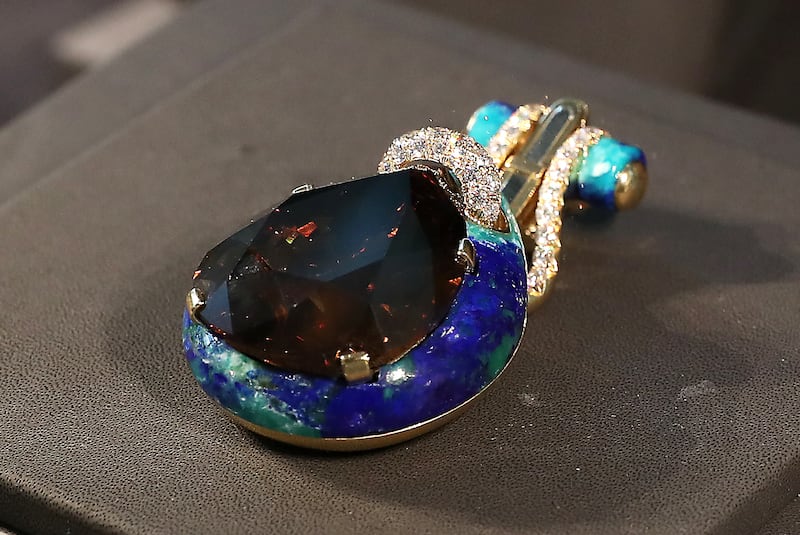Sotheby’s Dubai is playing host to an array of important jewellery and watches until Sunday, with an exhibition to celebrate coming auctions.
The show marks the first time most of these pieces have been brought to the region and is an opportunity to get up close to rare and exceptional vintage and contemporary jewellery and watches.
Coinciding with Art Week, the exhibition is being held at the Sotheby's gallery in the Dubai International Financial Centre, and showcases items that will eventually be part of several major auctions. The jewellery, for example, will be part of two sales: Magnificent Jewels in New York on June 14, and Magnificent Jewels and Noble Jewels in Geneva on May 10. The watches will also be sold in New York and Geneva in dedicated auctions.
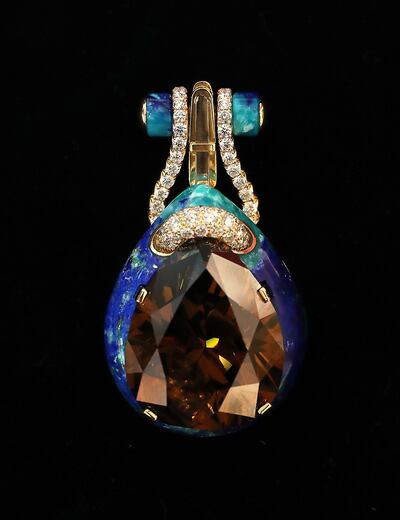
Jewellery pieces on show
Sophie Stevens, deputy director at Sotheby's Dubai, highlights some of the significant jewellery pieces on show, such as The Earth Star diamond, a fancy deep orange-brown gem that featured in the book Famous Diamonds by Lord Ian Balfour. Now mounted into a pendant by David Webb, on an azurmalachite ground, it carries an estimated value of $1.5 million to $2.5m.
“Weighing 111.59 carats, this is the second-largest brown diamond to ever come to auction,” Stevens explains. The unusual setting against a blue stone, Stevens says, is meant to “represent the earth seen from above, with the sea and the land”.
Unusually, the stone will be offered at auction with no reserve, meaning it will sell to the highest bidder on the day, irrespective of value.
“The opening price is $1, so someone might be really, really, really lucky,” says Stevens.
Also on show is an intricately looped white diamond necklace by Van Cleef & Arpels, circa 1955. Stevens explains why jewellery from this era is so desirable. “This is very typical of 1950s post-war design when people were really going back to bling. You see a lot of similarity between 1930s and 1950s jewellery, as people were going back to the pre-war glamour and extravagance. In the 1950s, we see a celebration of big stones, and big, voluptuous shapes, which worked well with the fashions of the time.”
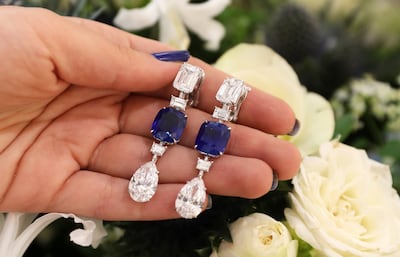
Another highlight is a pair of rare Kashmir sapphire earrings. An intense, rich blue, the stones are well matched in colour and size, at close to 10 carats each, and are framed with white diamonds.
“Kashmir sapphires are held up as the ideal of how a sapphire should look, and command the strongest prices,” Stevens says. “They are incredibly rare, as they were discovered almost by accident around 1882 after a landslide, [when] they discovered a deposit of the most beautiful coloured sapphires. The mining stopped in 1887, so you are talking [about] five to six years of very intense mining. So they are very rare and very beautiful.”
Another pair of earrings expected to draw great interest are drop earrings comprising large, natural pearls, of a size and lustre that is increasingly rare to find. "It's always very nice to bring natural pearls back here to the Gulf."
It's not only vintage pieces on show, however. Also on display are two pieces by the contemporary designer Joel A Rosenthal, better known as JAR, who Diane von Furstenberg has dubbed the "Faberge of our time". Famously elusive, JAR maintains a low profile, despite the cost of his pieces, with no website and no shop.
"You don’t choose JAR to be your jewellery, he chooses you, and there are famous stories of him turning down commissions,” Stevens explains. With a background in textiles and fashion, JAR approaches design in a unique way. “These stones are set like cross-stitch, and he uses a lot of black and gold and titanium to emphasise the stones as well. On the brooch, the use of the pave setting is exquisite. You can see how difficult it would be to get that curve, and graduation of colours.”
Watches on display
Elsewhere in the exhibition are a collection of watches aimed at a very different audience.
“We have an amazing salmon dial 39mm Royal Oak Audemars Piguet,” explains Frederic Watrelot, senior director of watches. Audemars Piguet is celebrating the 50th anniversary of the Royal Oak watch, with its distinctive hexagonal shape. “The salmon dial is extremely popular, as they made these in the 1990s, but not after. And this is solid platinum,” says Watrelot.
Created in 1972 by Gerald Genta, the Royal Oak is one of his most famous designs. That one of his personal timepieces is to be included in the sale only adds to the interest. Made to Genta's personal specifications, this Royal Oak is unique.
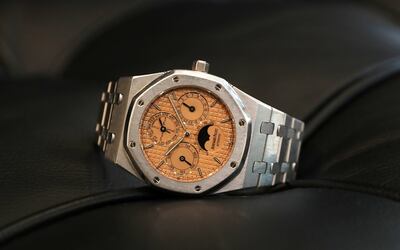
With two models in the show, another name that draws high interest is FP Journe. Founded in 1977, it strictly limits output, from as low as 100 to never more than 1,000 watches per year, meaning its demand far outstrips supply. The pair on display are rare early examples of the Resonance and Tourbillon models, Watrelot explains. "These are extremely sought after, and collectors are just running after them." Such is the interest, the estimates of $500,000 are expected to be overtaken. "I wouldn’t be surprised if that doubled,” says Watrelot.
A variety of Rolexes, each with a fascinating story to tell, are also on display. There are two with links to Oman that pay homage to the late Sultan Qaboos bin Said. Sure to be of interest to regional collectors, each carries a tribute on the dial. “One has Qaboos written on the dial in Arabic in white gold and is more rare, and the other shows the Omani dagger, the khanjar,” Watrelot says.
He also points out a third, smaller timepiece that is expected to generate a lot of interest. At only 31 millimetres, it is in yellow gold, has a blue disc on the dial and Eastern Arabic numerals. “This is extremely rare. It is from the late 1950s and is in mint condition.”
Being in such good condition makes it a true rarity, Watrelot explains, and despite the estimate of 25,000 Swiss francs, he anticipates intense bidding. “I expect it will do a lot better, because if you look for another one, you just cannot find it. Especially in this condition.”
There is also a yellow gold Paul Newman Daytona Rolex from the late 1960s. “The name is a nickname,” Watrelot says. “Paul Newman was seen wearing one, so suddenly people started calling it the Paul Newman. It’s not a name given by Rolex at all."
Another Rolex with a nickname is the Daytona Paul Newman JPS that takes its name from the racing colours once prevalent in Formula One. "This is because of the black and yellow combination after the John Player Special colours of the 1980s."
Yet another Rolex is an example of a now-defunct sales technique. "This is a Tiffany & Co watch, so this watch was purchased from a Tiffany store in the 1970s. At that time, the jeweller would print the name on the dial, so this is super rare."
